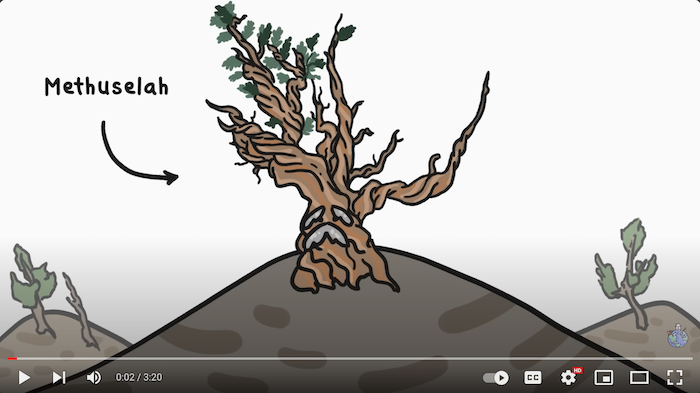
Watch this short video about the bristlecone pine tree.
The following activities and questions are designed to help your students use their noticing skills to move through the poem and develop their thinking skills so they understand its meaning with confidence, using what they’ve noticed as evidence for their interpretations. Read more about the framework upon which these activities are based.
-
Warm-up: Use this National Park Service finder to find a national park near you or one that is interesting to you. Share with a partner or small group. What did you learn or what seemed intriguing? Why? Would you want to visit this park? Why or why not?
-
Before Reading the Poem: Watch this short video about the bristlecone pine tree. What is something in the video that stood out to you? Why? What does this tree teach us about survival and/or nature? How might this relate to or differ from your own life and the nature or lack of nature around you?
-
Reading the Poem: Silently read the poem “Accepting Heaven at Great Basin” by Nathalie Handal. What do you notice about the poem? Note any words or phrases that stand out to you, or any questions you might have.
-
Listening to the Poem: Enlist two volunteers and listen as the poem is read aloud twice, and write down any additional words and phrases that stand out to you. Or, you can opt to listen to the poet read the poem.
-
Small Group Discussion: Share what you noticed about the poem with a small group of students. How do the resources from the beginning of class connect to your reading and understanding of the poem? How does the speaker feel about nature? How does that compare to what you shared at the beginning of class?
-
Whole Class Discussion: How does the title “Accepting Heaven at Great Basin” inform your reading of the poem? How might your reading of the poem be different if the title were “At Great Basin” instead? Have you ever felt emotionally or spiritually moved by nature or something else? Why? What imagery do you see in your poem?
-
Extension for Grades 7-8: (Teachers, if it is possible and safe for you and your students, take a walk around your community or school. Or, ask students to bring in a series of photos/written explanations of three images they see on their way to school.) As you walk around, take in the sights, sounds, and things around you. What can you see, hear, smell, taste, and touch? If your teacher allows it, take photos of three different images or jot down what you notice. Back in your classroom, view all of the images found on your walk. Take one or more of the images and use it to write a poem. What imagery can you bring into your poem?
- Extension for Grades 9-12: Read more poems about national parks and think about those you viewed at the beginning of class. Write a poem inspired by something you read, saw, or learned. In your poem, explore what it means to be “here,” however you may interpret it. If your school has the space, create a visual or online gallery of your nature poems. Share with the school.
Teach This Poem was developed for in-person classrooms, but it can be easily adapted for remote learning and hybrid learning models. Please see our list of suggestions for how to adapt this lesson for remote or blended learning.
Edited by Ada Limón, You Are Here: Poetry in the Natural World (Milkweed Editions, 2024) collects fifty previously unpublished poems by some of the United States’ most accomplished poets and reflects on our collective relationship to the natural world. Read two poems from the collection, “When the Fact of Your Gaze Means Nothing, Then You Are Truly Alongside” by Donika Kelly and “Parkside & Ocean” by b ferguson. Sign up for Poem-a-Day to receive two more poems from the collection each Saturday in April.
Nature poetry: poetry that engages with, describes, or considers the natural world. Read more.
